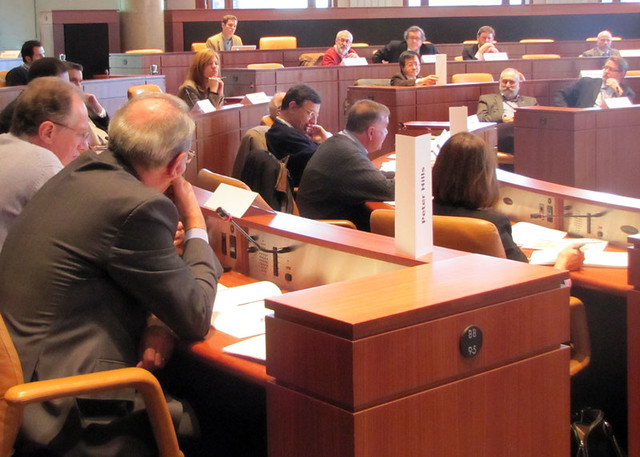18th December 2012 Vancouver, Canada
Walls and Windmills
There’s a Chinese proverb that says: “When the wind of change blows, some build walls while others build windmills.” It reminds me of Darwin’s theory which states that it is the best adapted of the species that survives. Every change to the context of our existence provides an opportunity to flourish or the potential to wither. I tend to think the world is in a constant state of flux anyway, with no stasis in which to feel comfortable and cosy for a while.
But whether or not that’s true, it would be hard to dispute that one of the winds of change blowing at the moment is the growing economic strength of many Asian states, China in particular. That change brings both commercial opportunity and a shift in the balance of global influence. What is less certain is the degree, pace and form of this change. What will be the impact of a new Chinese leadership? What economic and political reforms will they make? How will issues such as the DPRK-South Korea and the Senkaku Islands dispute be resolved? How will Asian states exert political influence internationally?
Meeting to discuss these issues recently were a gathering of British and Canadian diplomats, including Ambassadors current and former, academics, politicians, business leaders and journalists (and me), almost all of whom (except me) had a great depth of expertise in Asian affairs. The number of knighthoods, peer reviewed publications, and investment millions in one small space was remarkable. If brain power equalled energy, Metro Vancouver could simply have plugged in for a couple of days. The group, known as the Canada-UK Colloquium or CUKC, meets annually, alternating venues between the UK and Canada. This year it was Vancouver’s turn, a perfect city in which to discuss Asia Pacific issues; and more specifically the Morris J Wosk Centre for Dialogue at Simon Fraser University. With an air of the UN – a circle of seats, desks and microphones arranged like an arena – it was ideal.

Through the discussion concerns were voiced about the inadequacy of the current ‘noodle-soup’ of regional architecture (ASEAN, ASEM, TPP etc) to tackle disputes, and the need for something stronger and more effective. Disagreement was aired over the level of future US engagement or the prospects for achieving a genuinely overarching multilateral framework. Theories were proposed on the degree to which political disagreements within the region would be expressed through economic measures. All fascinating stuff. But why was this of interest to Canada or the UK?
For British Columbia, the share of exports to the Pacific Rim marginally exceeded that to the US for the first time in 2011. Meanwhile, the UK remains Canada’s 2nd largest destination for foreign investment and exports, and is its 4th largest trading partner. UK and Canadian interests are inextricably linked; and at the same time, they are linked to whatever is happening in the Asia Pacific region. As Foreign Secretary William Hague said in Singapore earlier this year: “…those who might think that British engagement with Asia is a thing of the past, or that we will become a partner of declining relevance, could not be more wrong.”
He went on to say “We know that in a region as diverse as Asia there is no substitute for a deep understanding of individual nations… We hope to open up to eight new British diplomatic posts in Asia by 2015 [and] we will also have deployed around 60 extra staff to China, 30 to India and another 50 across our Asian network in Indonesia, Vietnam, Malaysia, the Philippines, Thailand, Burma, Singapore, Cambodia, Brunei, North and South Korea and Mongolia.”
Whatever the answers to the Asia Pacific questions, discussed in depth by the CUKC, it was clear that over the coming decades the UK and Canada will need to keep engaging with each other, and with the Asian states themselves. We will need to ensure we are building the right type of windmills, rather than the wrong type of walls.